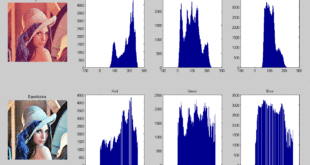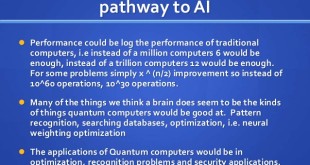Artificial intelligence expert George Zarkadakis believes robots could have sex with each other to evolve and produce superior offspring and this scary new world could be closer than we might imagine. He predicts that humans could even breed with machines to create new hybrid species. Mr Zarkadakis said robots that are both silicon and carbon based, could have sex at a molecular level to produce offspring – although how this could happen is unclear.
Professor Kevin Warwick from the Institution of Engineering and Technology said that robots are already good at producing new robots, which are often better than themselves. Professor Noel Sharkey said that there might not be any need to look at molecules as robots can be ‘bred’ by swapping software so that the code used to make robots perform certain tasks particularly well, can be combined to create a ‘child’. He believes that robots of the future will be able to print their offspring, a little like a 3D printer, but could assemble them too.
Scientists in Amsterdam have created the world’s first batch of robots that can reproduce and create offspring. The new robots have been programmed with a genome that enables them to communicate with each other, learn, and evolve by creating their own new genomes with new information they have learnt.
Researchers including Google Brain, OpenAI,and DeepMind, are now developing machine-learning systems that can create machine-learning systems.
Researchers from Google Brain were able to design software that created an AI system to take a test that measures how well software can process language. The software did better on the test than software designed by humans.
Reinforcement learning (RL) is an area of machine learning inspired by behaviourist psychology, concerned with how software agents ought to take actions in an environment so as to maximize some notion of cumulative reward. This approach, is largely how AlphaGo, a computer developed by a subsidiary of Alphabet called DeepMind, mastered the impossibly complex board game Go and beat one of the best human players in the world in a high-profile match last year. Now reinforcement learning may soon inject greater intelligence into much more than games, says MIT. In addition to improving self-driving cars, the technology can get a robot to grasp objects it has never seen before, and it can figure out the optimal configuration for the equipment in a data center. According to Silver, reinforcement learning has recently become so formidable as it is combined with deep learning, a technique that involves using a very large simulated neural network to recognize patterns in data.
Google’s AutoML & NASNET architecture
Back in May, Google revealed its AutoML project; artificial intelligence (AI) designed to help them create other AIs. Now, Google has announced that AutoML has beaten the human AI engineers at their own game by building machine-learning software that’s more efficient and powerful than the best human-designed systems.
Google’s AutoML project, uses an approach that automates the design of machine learning models. AutoML can design small neural networks that perform on par with neural networks designed by human experts. However these results were constrained to small academic datasets like CIFAR-10, and Penn Treebank.
In Learning Transferable Architectures for Scalable Image Recognition, Google researchers applied AutoML to the ImageNet image classification and COCO object detection dataset — two of the most respected large scale academic datasets in computer vision. To tackle these datasets google developed a novel architecture, called “NASNet”.
On ImageNet image classification, NASNet achieves a prediction accuracy of 82.7% on the validation set, surpassing all previous Inception models.. Additionally, NASNet performs 1.2% better than all previous published results and is on par with the best unpublished result reported on arxiv.org. Furthermore, NASNet may be resized to produce a family of models that achieve good accuracies while having very low computational costs.
For example, a small version of NASNet achieves 74% accuracy, which is 3.1% better than equivalently-sized, state-of-the-art models for mobile platforms. The large NASNet achieves state-of-the-art accuracy while halving the computational cost of the best reported result on arxiv.org (i.e., SENet), Google scientists noted on their research blog.
Ultimately, Google is aiming to hone AutoML until it can function well enough for programmers to use it for practical applications. If they succeed in this, AutoML is likely to have an impact far beyond the walls of Google. WIRED reports Pichai stated, at the same event from last week, that “We want to democratize this,” — meaning, the company hopes to make AutoML available outside Google.
References and resources also include:
https://research.googleblog.com/2017/11/automl-for-large-scale-image.html
https://futurism.com/googles-machine-learning-software-has-learned-to-replicate-itself/
 International Defense Security & Technology Your trusted Source for News, Research and Analysis
International Defense Security & Technology Your trusted Source for News, Research and Analysis

